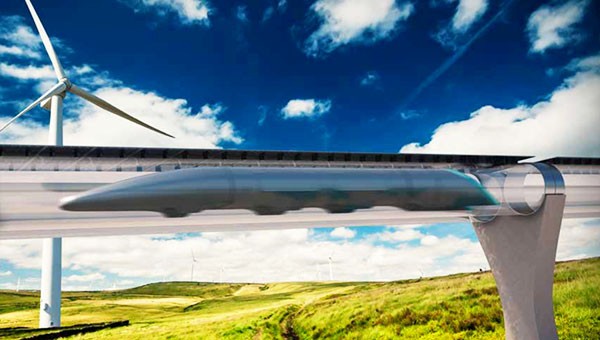SpaceX this week announced plans to construct a mile-long Hyperloop test track next to its headquarters in Hawthorne, California, scheduled for completion by June 2016.
The company concurrently announced an opencompetition for university students and independent engineering teams to design and build the best Hyperloop pod. Entrants will be able to test their pods on the track.
“These tests will provide proof points at a reasonable cost, and will help build support for the project,” said Jim McGregor, principal analyst at Tirias Research.
Why California and Not Texas?
SpaceX boss Elon Musk earlier this year contemplated building a Hyperloop test track in Texas.
The switch from Texas is possibly the result of Hyperloop Transportation Technologies’ focus on Central California and Interstate 5, suggested Richard Sear, global vice president of the visionary innovation group at Frost & Sullivan.
HTT earlier this year reached an agreement to develop a five-mile-long installation of the Hyperloop track in Quay Valley, a sustainable model town being built on 7,500 acres along California’s Interstate 5 freeway between Los Angeles and San Francisco.
Construction will begin in 2016, and the track will be built using HTT’s tube, capsule and station models.
The five-mile track will cost about US$100 million, Sear told TechNewsWorld, most of it to be funded by HTT’s forthcoming IPO.
HTT already has raised $8.5 million in a first round of funding, and there are rumors it’s planning an $80 million round later this year. There’s speculation that Sherpa Ventures founder Shervin Pishevar, an early stage investor in Uber and other companies, will cough up half that amount.
“The topography of California is suitable, and the ultimate buy-in of other partners will likely rest on California more so than Texas, leaning a decision to favor California,” Sear said.
One Mile May Not Be Enough
The length of the SpaceX test track may be problematic.
Given that pods on the Hyperloop would run at up to 760 mph, it remains doubtful whether there will be enough track to accelerate the pods to anywhere near that speed and decelerate safely to a stop.
The one-mile test track “would not suffice to offer any viable feedback,” Sear said. “People even argue that five miles would not be long enough.”
Although a mile-long track would provide only limited testing capabilities, “this is a new and ambitious effort, and one that’s going to be fraught with challenges. So, just as we did in the early days of the space program, you take little steps at a time,” Tirias’ McGregor told TechNewsWorld. You run tests “for the way you think things will work — modify them, test them again, and then move on to the next phase.”
Do the Math
It’s not clear that the mathematics of the Hyperloop proposal make sense, argued Matt Johnson, a member of the American Institute of Certified Planners.
Problems with Musk’s proposal, he said, include the estimated costs, the suggested 30-second intervals between pod departures, safety considerations, the actual amount of traffic the Hyperloop can carry as compared with the freeways, the fact that the Hyperloop will bypass all the towns and cities between San Francisco and Los Angeles, and the location of its beginning and end points — they won’t run into either city’s downtown area.
The success of a demo on a five-mile-long track “is very speculative at this stage,” Frost’s Sear acknowledged — but if it works, it “would in theory shift the funding model from a crowdsourced one to significant inward investment from organizations looking to capitalize on a proven disruptive mobility alternative in a highly lucrative market.”
The Hyperloop proposal is technically flawed, according to researchers at NASA’s Glenn Research Center.
Its tube would have to be twice the size originally planned, and the maximum pod travel speed would have to be cut down to 620 mph, they argued in a paper presented earlier this year at the 2015 AIAA SciTech Conference.
The concept remains possible, they concluded, but implementing it will require a more complete design based on additional engineering and economic analyses.






















































